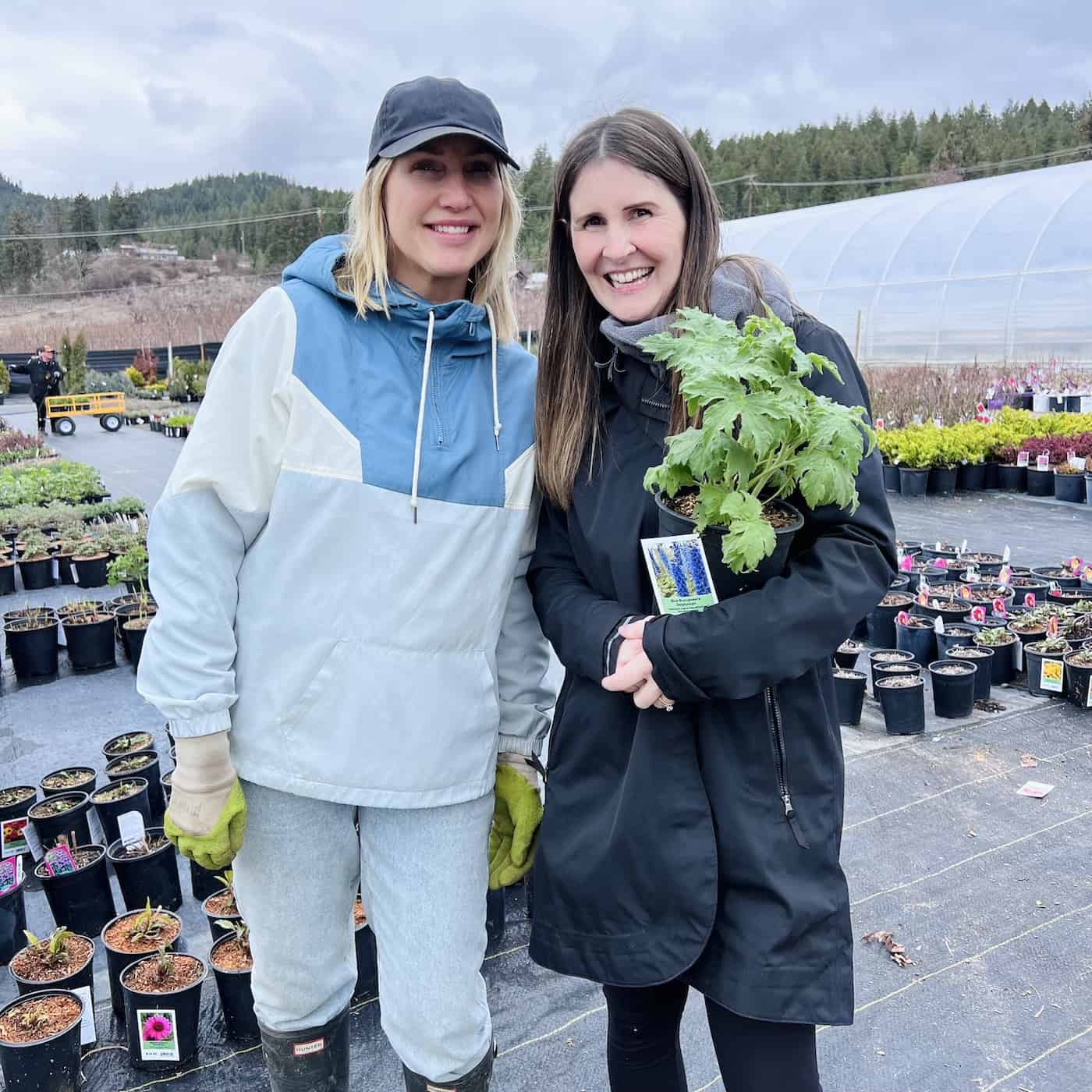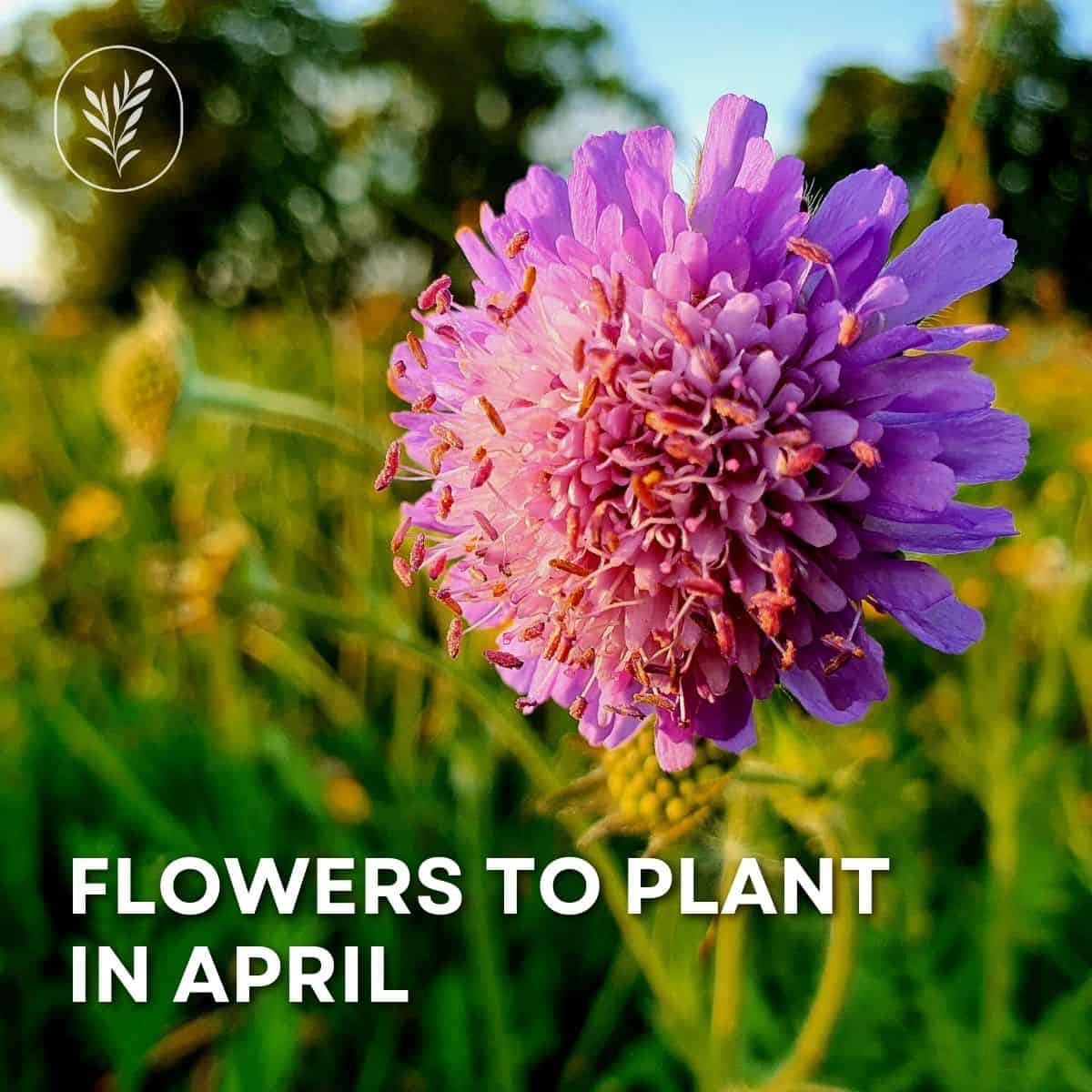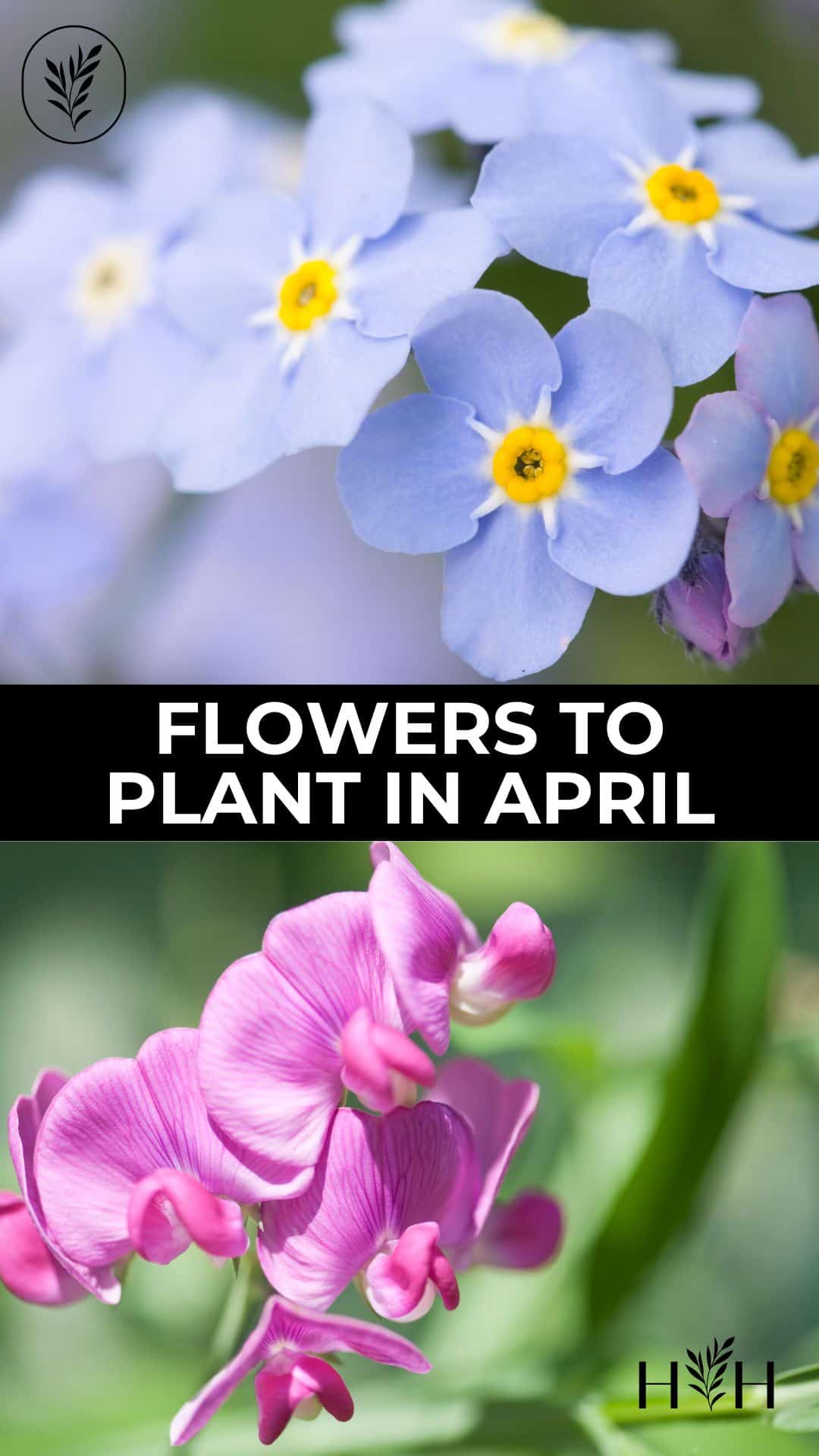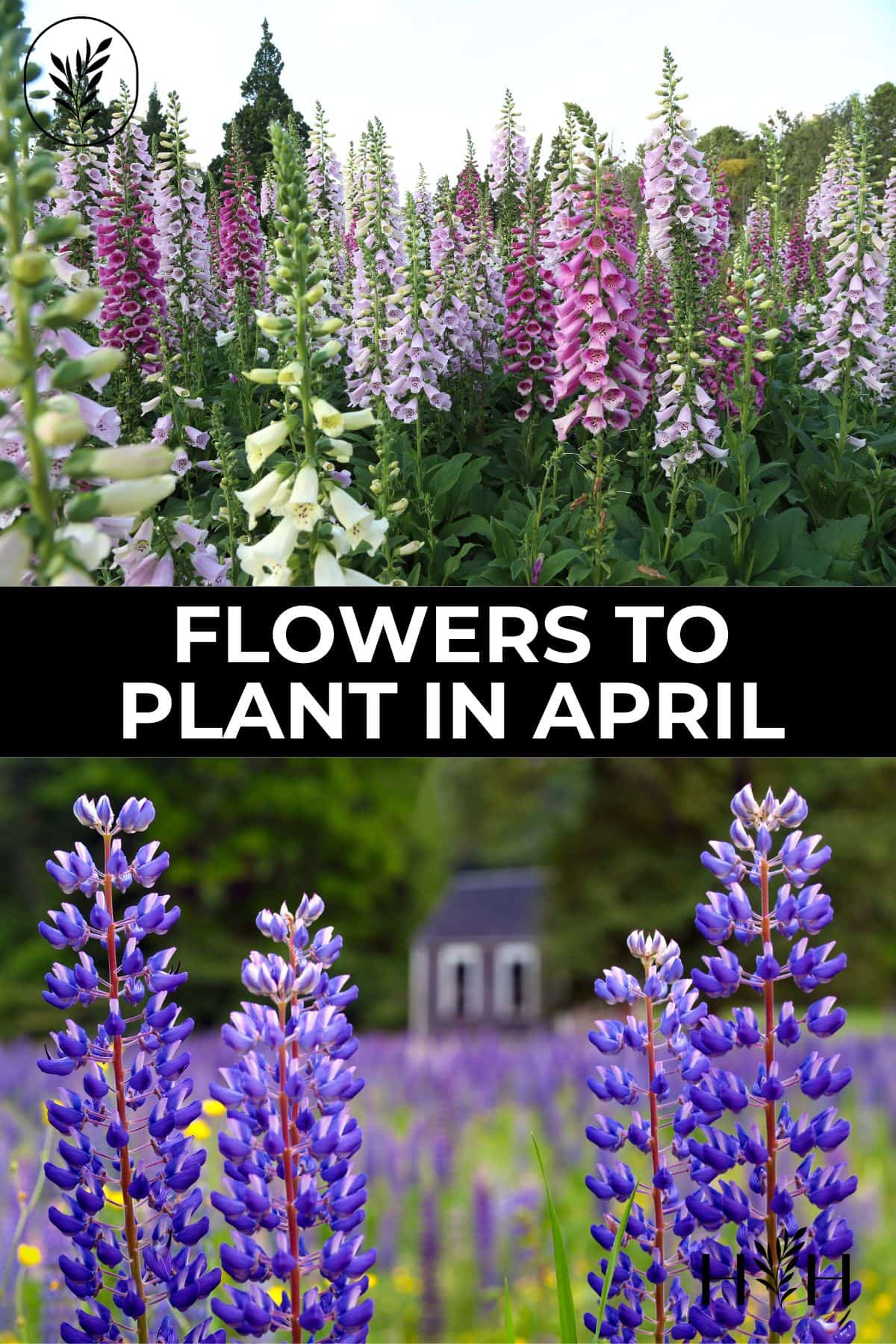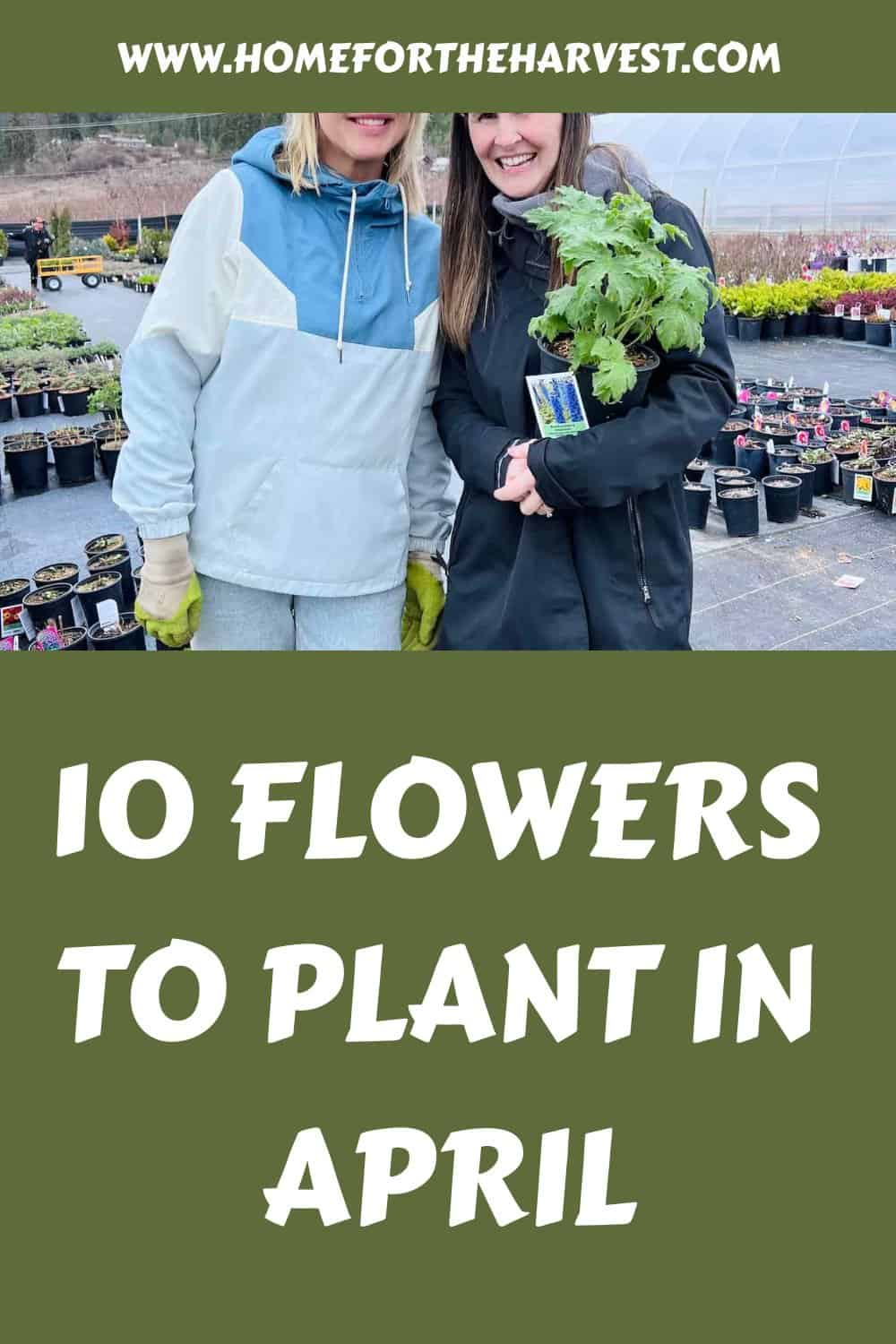April is the perfect time to get your garden ready for spring. With so many gorgeous types available, selecting the ideal flowers for your garden can be tricky. From larkspur and forget-me-nots to sweet peas and poppies, there are plenty of stunning blooms for a colorful display throughout the season. Read on as we take a closer look at some of our favorite flowers to plant in April.
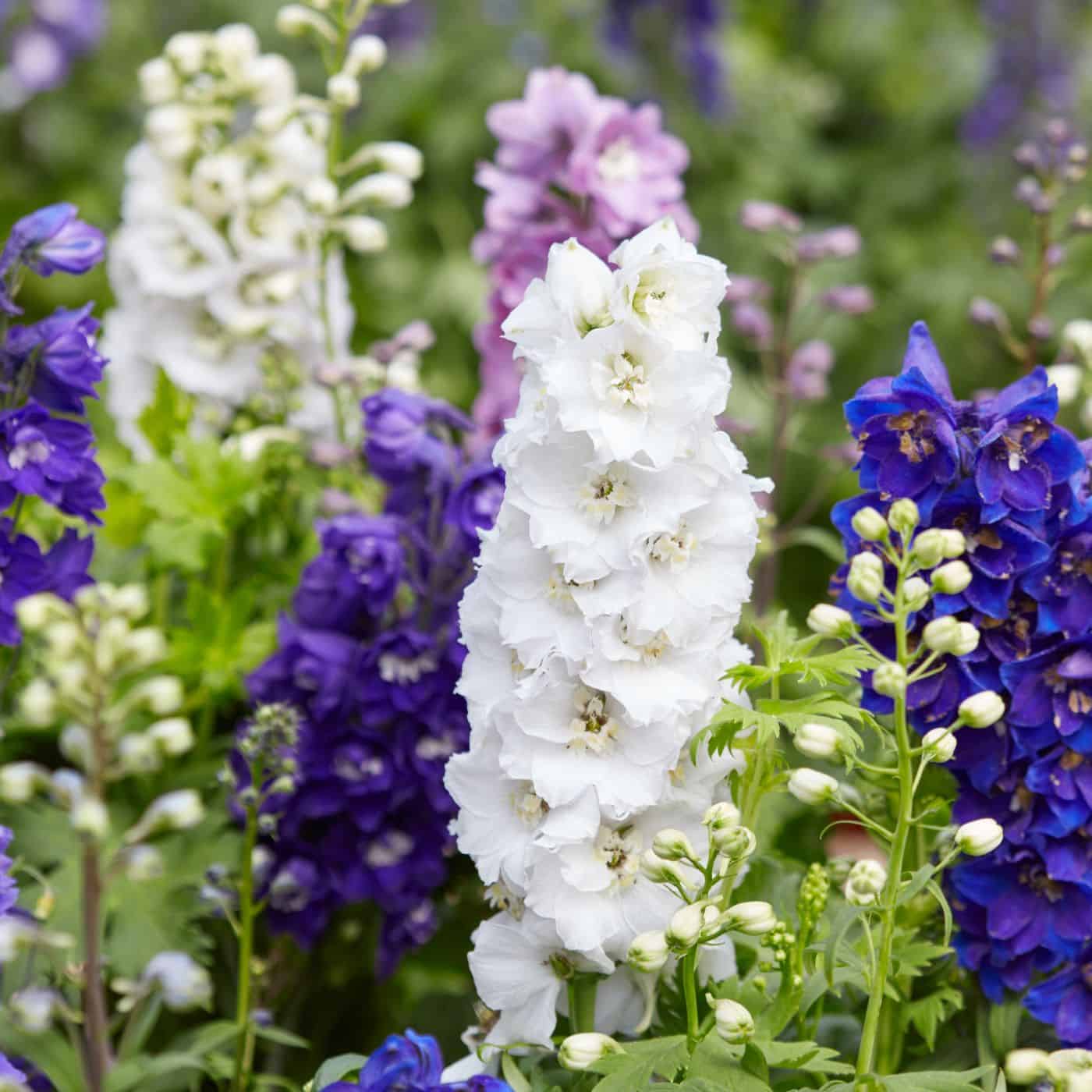
1. Larkspur
The dainty larkspur, a delicate bloom that flourishes during the spring and summertime, can bring an extra bit of charm to any garden. With its long stems and vibrant colors, it’s sure to add beauty to any garden. Larkspurs are easy to grow and require minimal maintenance, making them ideal for beginner gardeners who don’t want too much hassle.
Larkspurs come in a range of colors, including blues, purples, pinks, whites, and yellows. The flowers look like tiny stars or bells depending on the species. Plus they attract hummingbirds and butterflies which makes them great for wildlife gardens.
Pick a spot with soil that drains well and get plenty of sun for the larkspur for at least 6 hours. Make sure there is enough space between plants so they can get plenty of air circulation. Water regularly but avoid overwatering as this can lead to root rot or other diseases. Deadheading spent blooms will encourage more flowers throughout the season as well as help keep your plants looking neat and tidy. You may also need to stake taller varieties if they become top-heavy due to wind or rainstorms.
Finally, watch out for pests like aphids that could damage your larkspurs if left unchecked. Most common organic insecticides will take care of them quickly without harming beneficial insects such as bees or butterflies that may be visiting your garden.
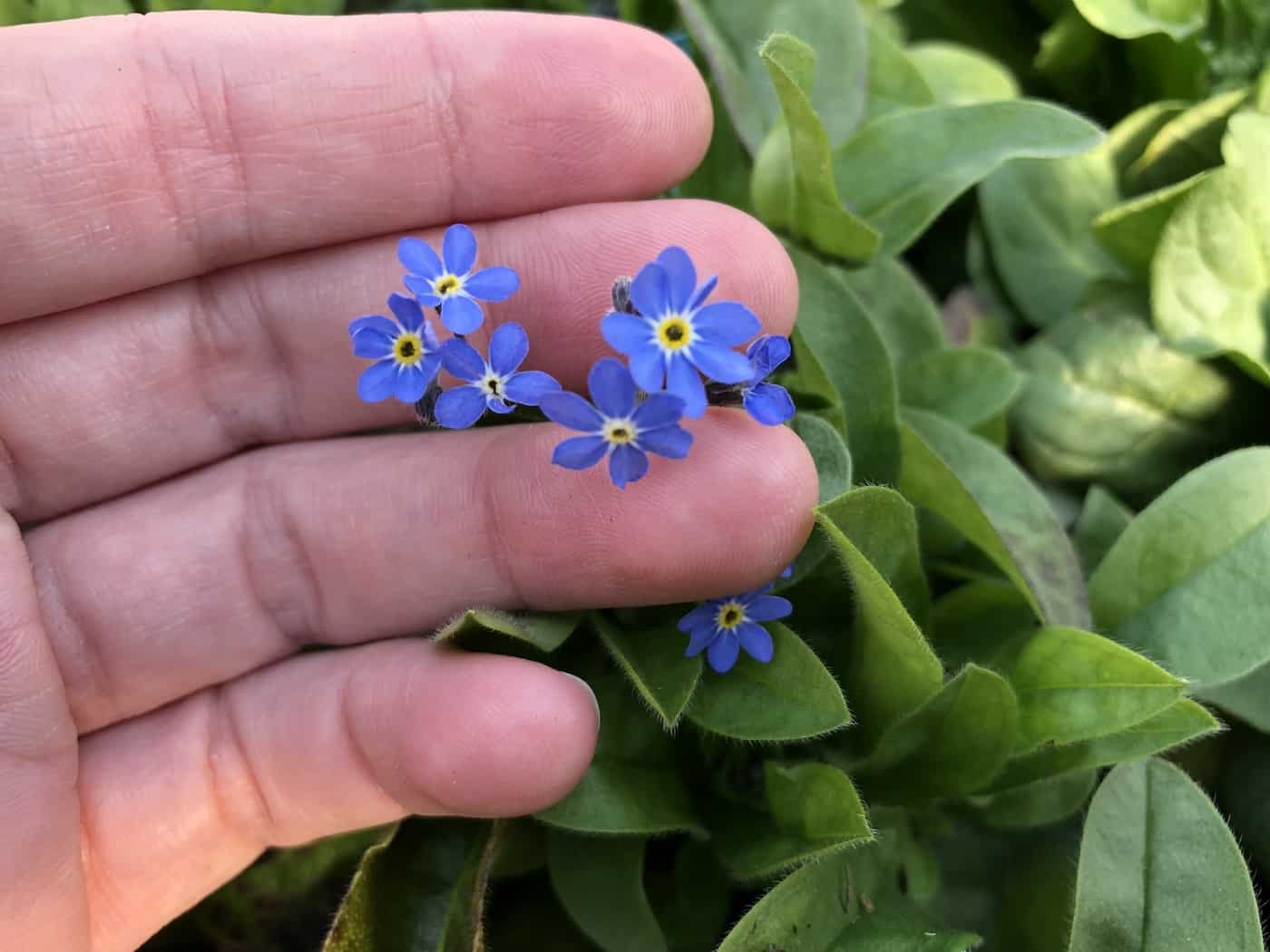
2. Forget-me-nots
Forget-me-nots are an April bloomer in many climates, and its totally fine to plant them in full bloom. These small, blue flowers are easy to grow and require minimal maintenance, making them ideal for beginner gardeners who don’t want the hassle of tending to complicated plants. Forget-me-nots can be planted in full sun or partial shade areas.
When planting forget-me-nots, it’s important to choose an area with well-draining soil that has plenty of organic matter mixed in. The flowers prefer cooler temperatures so they should not be placed in direct sunlight during hot summer days.
To ensure the best results, use a fertilizer specifically designed for flowering plants when planting forget-me-nots. Once planted, water regularly until established then water as needed depending on your climate conditions and soil type.
Deadheading spent blooms throughout the season will help promote new growth and encourage more flowers to form over time; however, this isn’t necessary if you don’t mind some seedlings appearing here and there around your garden beds come springtime. Additionally, trimming back stems after flowering will also help keep these perennials looking their best year-round (and keep them from self-seeding too readily).
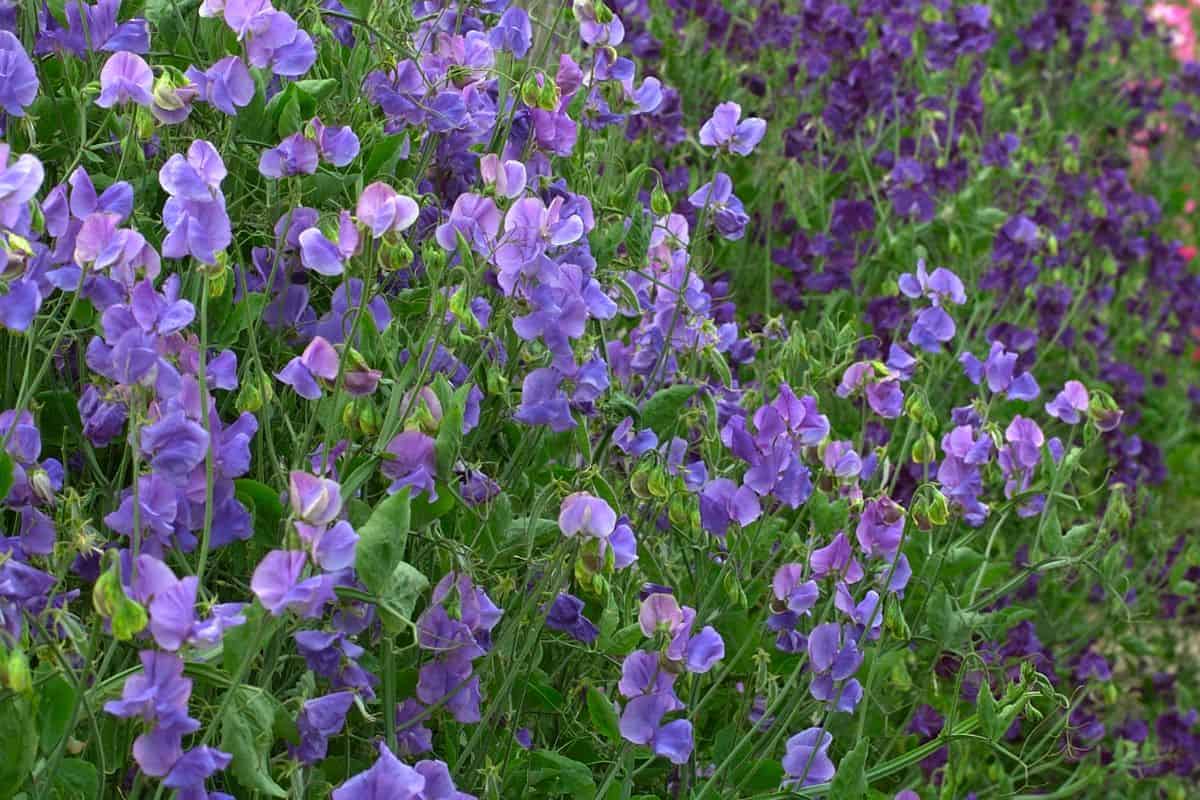
3. Sweet peas
Sweet peas are a beautiful addition to any garden. With their long, cascading blooms and sweet scent, they can bring a unique charm to your outdoor space. Sweet peas boast a rainbow of shades, from pale white to luscious lavender and dainty pink. They’re easy to grow, requiring minimal maintenance and care. Plus, they’re drought-tolerant so you don’t have to worry about watering them too often.
When planting sweet peas it’s important that you choose the right location for them – somewhere with plenty of sun but also some shade during the hottest parts of the day is ideal. The soil must be adequately drained; if too wet for extended periods, the sweet peas may not survive. You can plant them from seed in April or buy starter plants at the garden center.
Once planted be sure to give them plenty of support by using stakes or trellises; this will help keep them upright as they grow taller over time. Fertilizing your sweet pea plants every few weeks can help encourage growth and bloom production throughout the season – just make sure not to overdo it.
Regular pruning is also essential in order for your plants to stay healthy; remove dead flowers regularly as well as any weak stems that may be detracting from their overall appearance. Additionally, watch out for pests like aphids which could potentially damage or destroy the blooms if left unchecked.
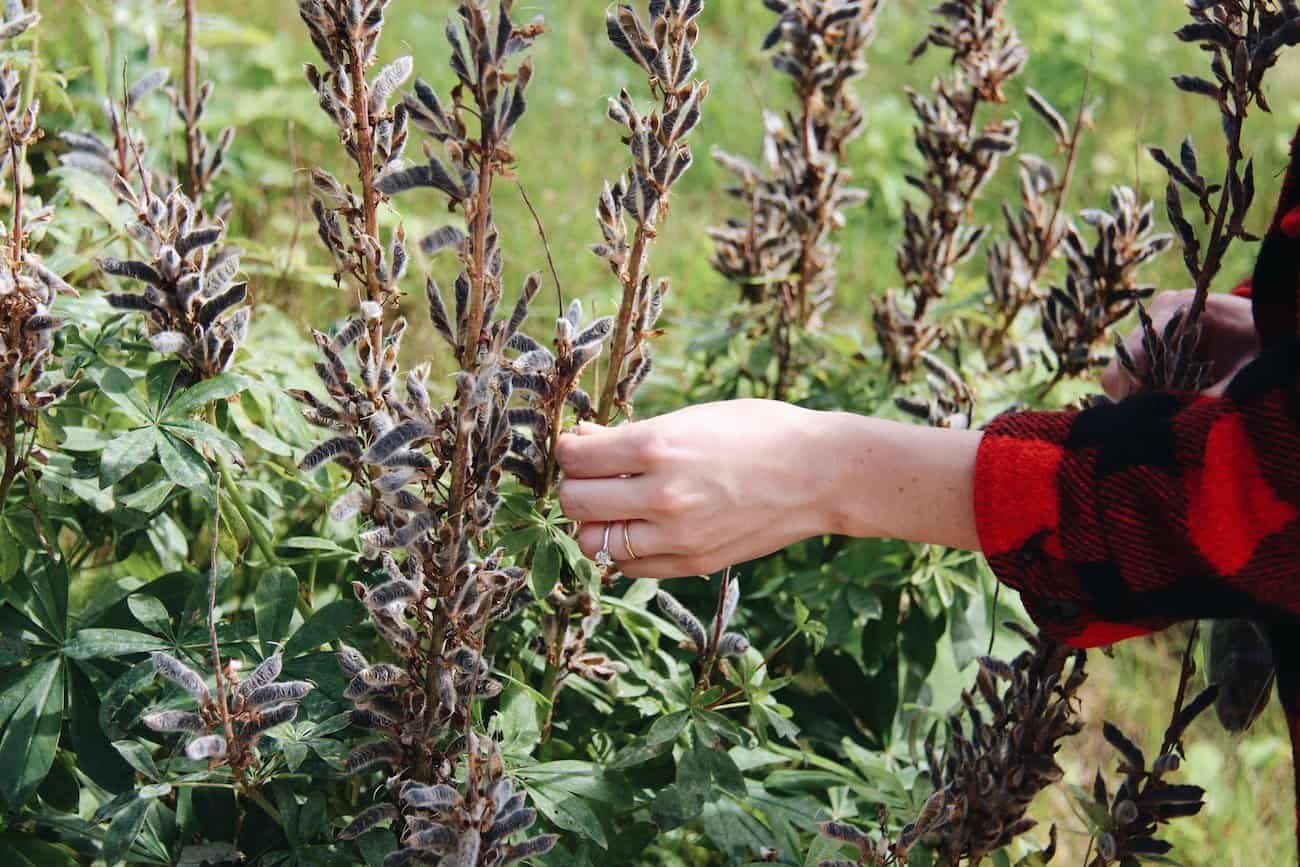
4. Lupin
Lupins are a late spring bloomer known for their tall spires of vibrant blooms. They come in a variety of colors including purple, blue, pink, yellow, and white – so you can mix and match them for a dazzling effect. Lupins are also quite hardy plants; they’re drought-tolerant and can survive cold winters with ease. Plus, they attract beneficial pollinators like bees and butterflies which help keep your garden healthy.
When it comes to cultivating lupins in the garden, certain considerations should be taken into account before beginning. First off, choose an area that gets plenty of sun throughout the day as this will ensure that your flowers bloom nicely each year. These plants are shade tolerant but bloom best in the sun.
For ideal growth, lupins require soil that is not overly dense; adding compost or other organic matter can help loosen it up and ensure proper drainage. Finally, be sure not to overcrowd the area when planting; give each plant enough room so they have plenty of air circulation around them which helps prevent disease problems down the road.
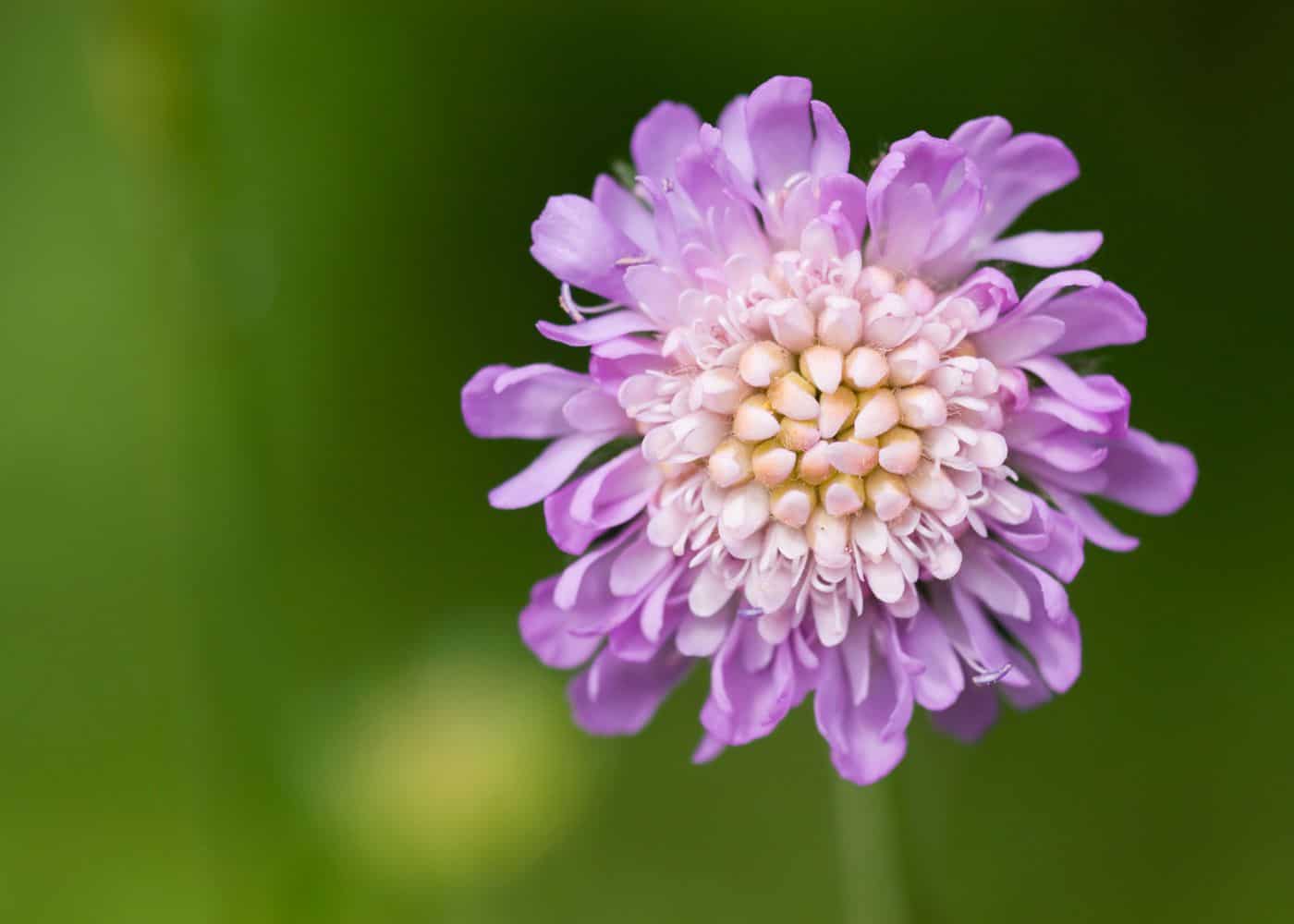
5. Scabiosa
Scabiosa is a captivating flower often used in bouquets. It’s easy to grow, requires minimal care, and blooms from late spring until fall. Its fragrant flowers come in shades of blue, purple, pink, white, or yellow and look beautiful when planted with other flowers on this list. The plant also attracts butterflies and hummingbirds making it a great addition to wildlife gardens.
Scabiosa has many uses in the garden including borders, beds, rock gardens, or containers. It can be grown from seed indoors about six weeks before the last frost date for your area and then transplanted outdoors after all danger of frost has passed. Alternatively, you can purchase young plants at your local nursery in early springtime ready to be planted outside straight away.
When planting scabiosa, choosing an area that receives full sun but will provide some protection from strong winds as the stems are quite delicate and may break easily if exposed to too much windy weather. Soil should be well drained with plenty of organic matter such as compost added prior to planting – this will help retain moisture during dry spells while ensuring good drainage which scabiosa prefers over wet soil conditions, which can cause root rot problems if left unchecked.
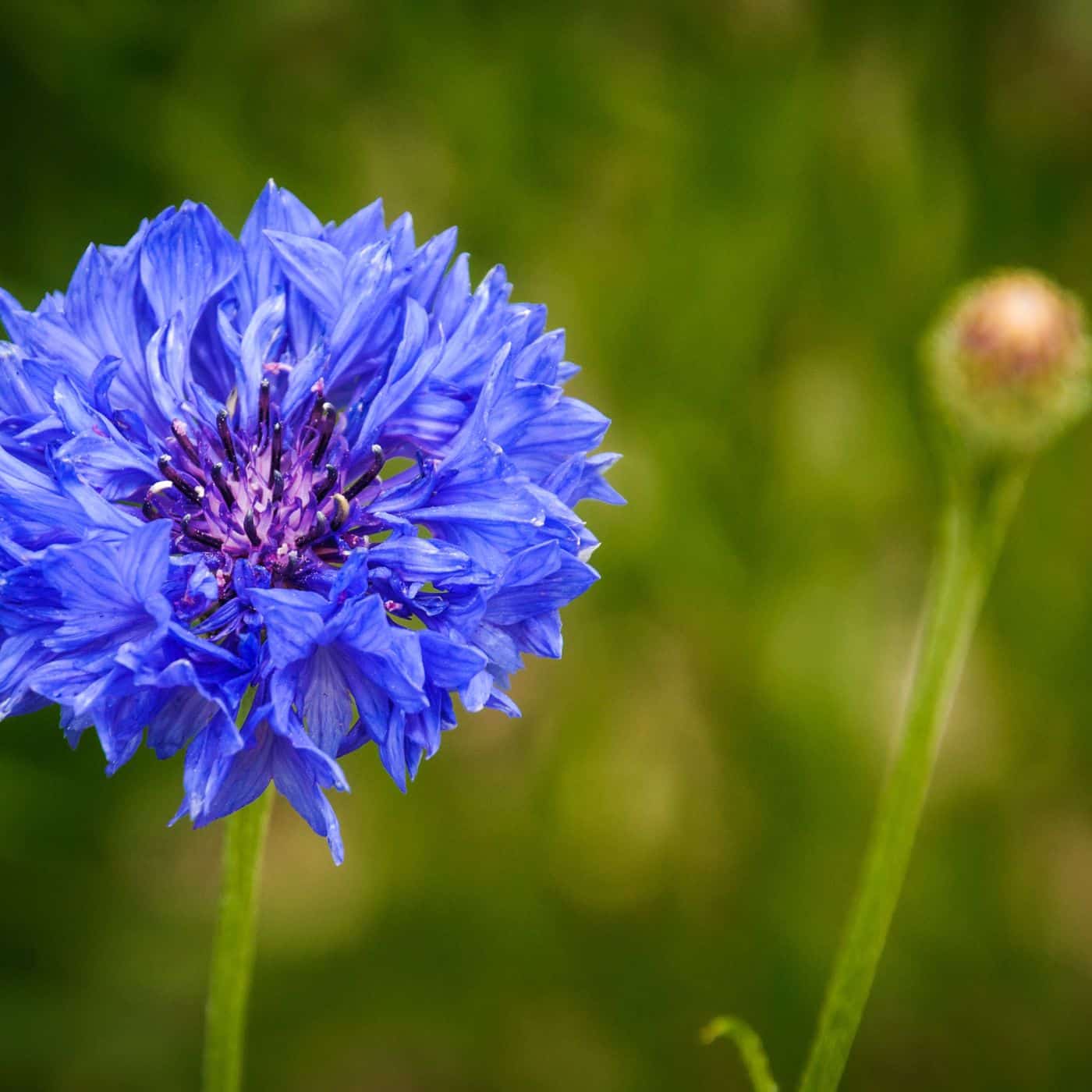
Bachelor’s button, also known as cornflower, is a beautiful and hardy flowering annual. The flowers are typically a deep blue-purple hue with white tips, though they can also come in shades of white, pink, and red.
The plants stand up to a maximum of two feet in height and flaunt their blooms from the late springtime through early summer. These flowers are perfect for cutting gardens, borders, wildflower meadows, cottage gardens, and more.
When planting bachelor buttons, choosing an area that gets plenty of sun throughout the day – at least 6 hours per day is ideal. Ensure the dirt is permeable but not too arid; if needed, incorporate some humus or fertilizer prior to sowing your seeds. Plant them about one inch apart in rows 12 inches apart for best results.
Water regularly during hot weather; mulching around plants will help retain moisture in the soil too. Deadhead spent blooms often to encourage new growth and keep your garden looking its best all season long.
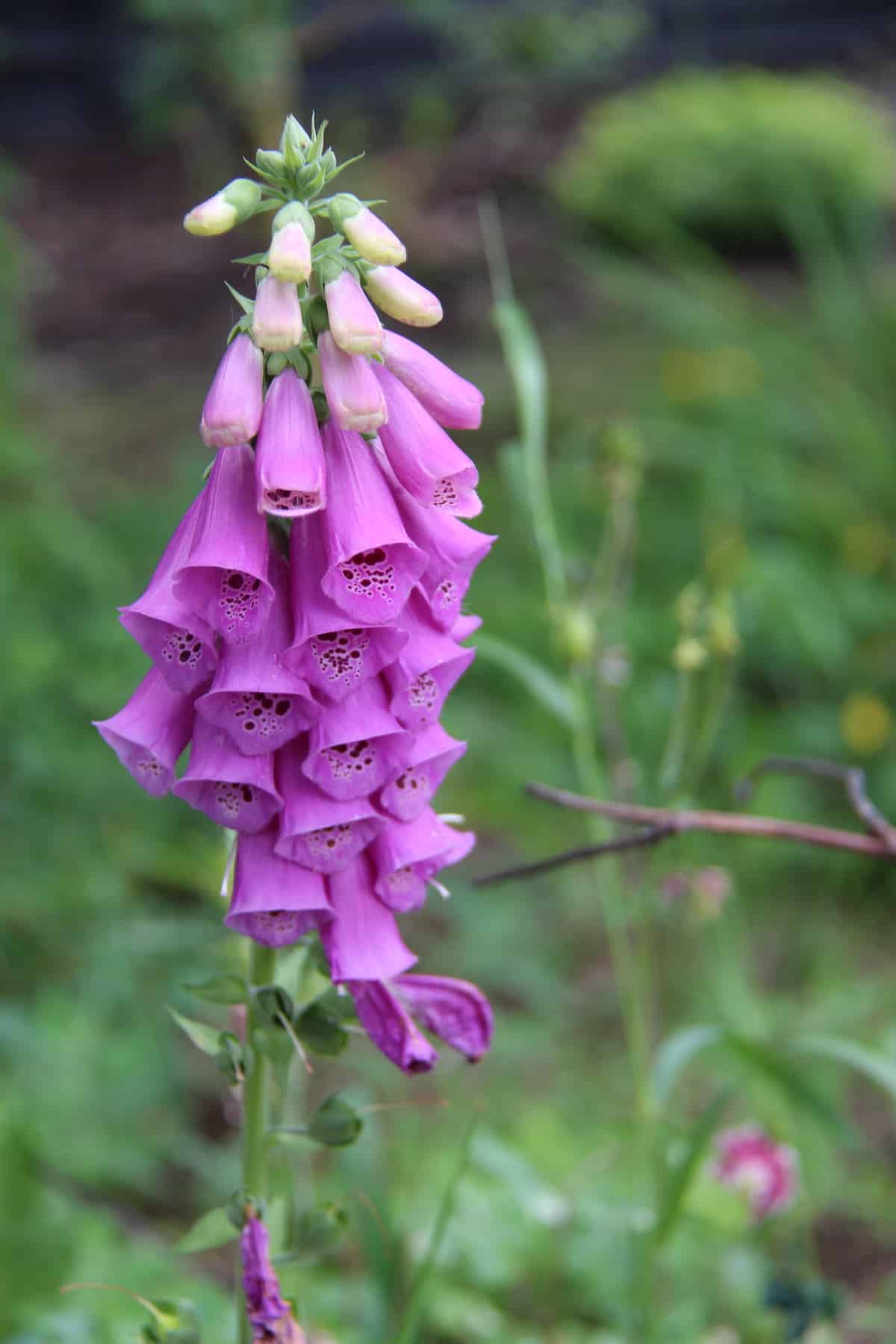
7. Foxglove
Foxglove (Digitalis purpurea) is a beautiful and versatile wildflower that has long, tubular flowers. It blooms in shades of white, pink, purple, or yellow from late spring to early summer.
Foxglove’s tall stems make it an excellent choice for back borders or as a backdrop for other plants. The plant prefers moist soil and partial shade but will tolerate full sun if given enough water. It also attracts pollinators like bees and butterflies, making it great for wildlife gardens.
When planting foxglove, be sure to give them plenty of space; overcrowding can lead to disease problems such as powdery mildew or rust. For best results, fertilize lightly with a balanced fertilizer every few weeks during the growing season and mulch around the base of the plants with organic material like compost or bark chips in winter months when temperatures drop below freezing.
Foxglove requires little maintenance once established. To get the best blooms, deadhead spent flowers regularly throughout the growing season.
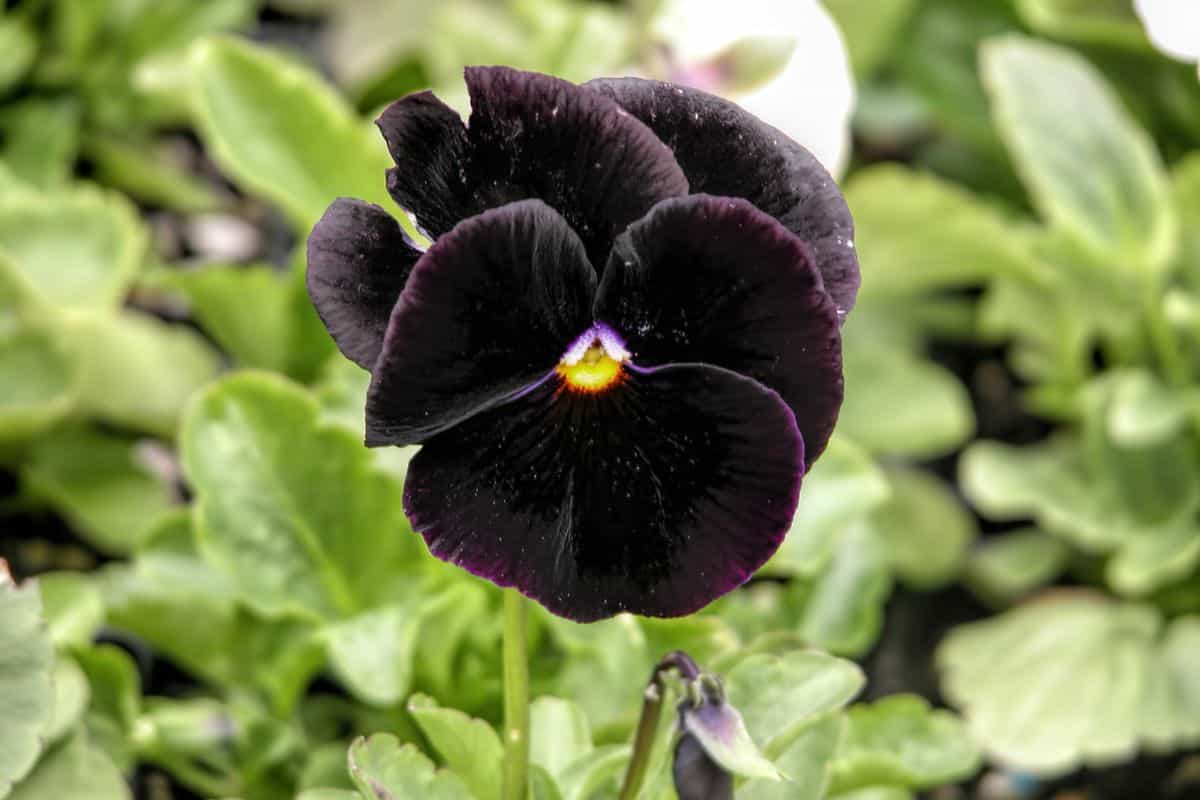
8. Pansy
Pansies are an ideal flower for the North American gardener. Pansies offer a wide range of hues and sizes, enabling you to craft breathtaking displays in your garden. They’re also relatively easy to grow, making them perfect for novice gardeners or those who don’t have a lot of time to devote to gardening. Pansies are available in both annual and perennial forms, allowing you to select the one best suited for your environment and requirements.
When planting pansies, it’s important to choose a spot that gets at least six hours of direct sunlight each day – more is better. If you’re looking for vibrant blooms all season long, make sure you deadhead spent flowers regularly; this will encourage new growth and keep the plants flowering throughout the year. To ensure healthy roots, water deeply once per week during dry periods; mulching around the base of the plant will help retain moisture too.
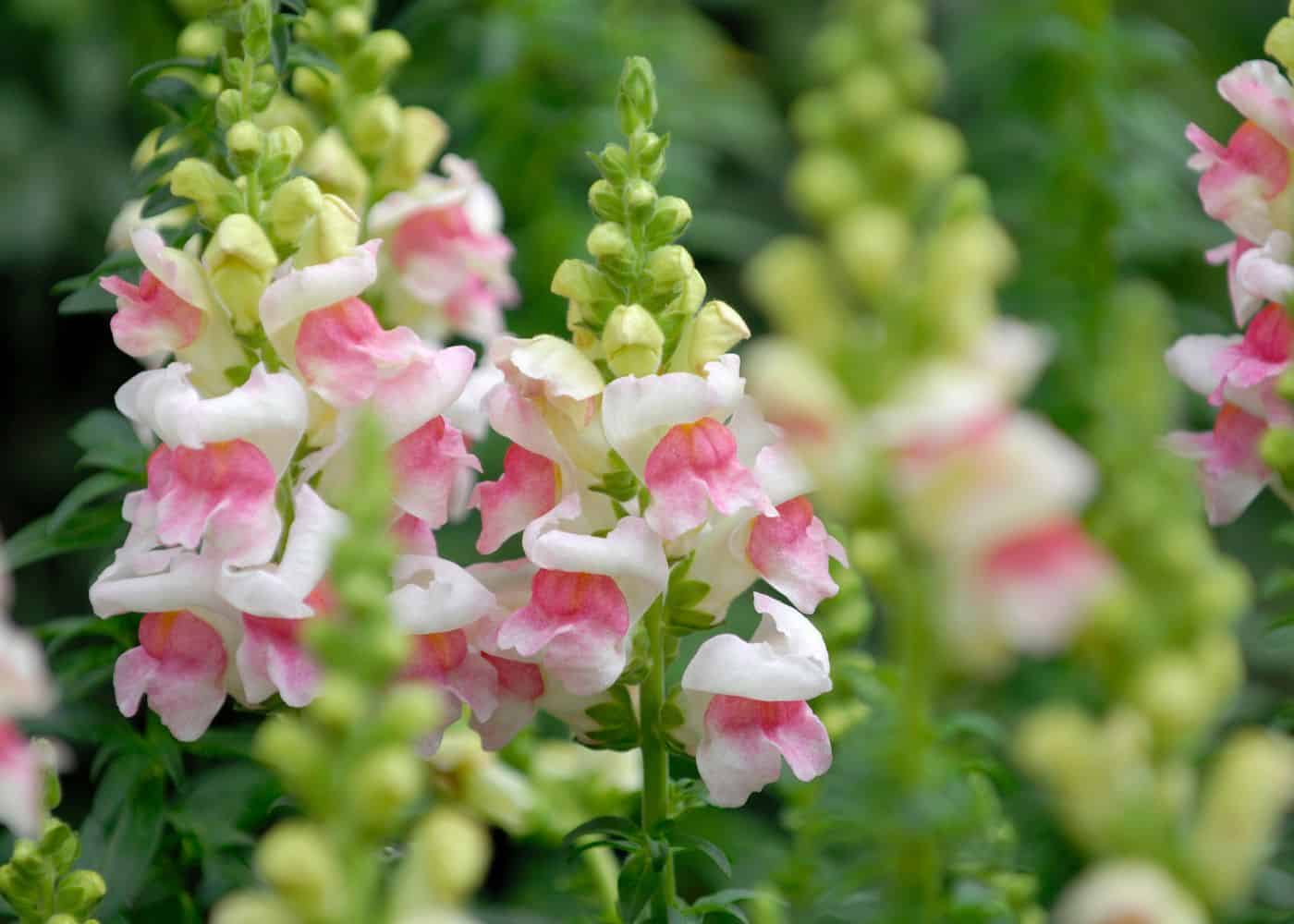
9. Snapdragon
Snapdragons are an incredibly popular flower choice for North American gardens. With their tall, stately stems and wide range of colors, snapdragons add a beautiful splash of color. Snapdragons also have a unique shape; the flowers look like little dragons that can be snapped open and closed with your fingers. They’re easy to grow from seed or from store-bought transplants.
When planting snapdragons, provide them with adequate room to avoid being overshadowed by other flora. The soil should be well-draining and slightly acidic (pH 6-7). Planting them in full sun is best, but they will also tolerate some shade. Water regularly during dry periods, especially when the plants are young and establishing themselves in the garden. Feed with a balanced fertilizer every few weeks throughout the growing season for maximum blooms.
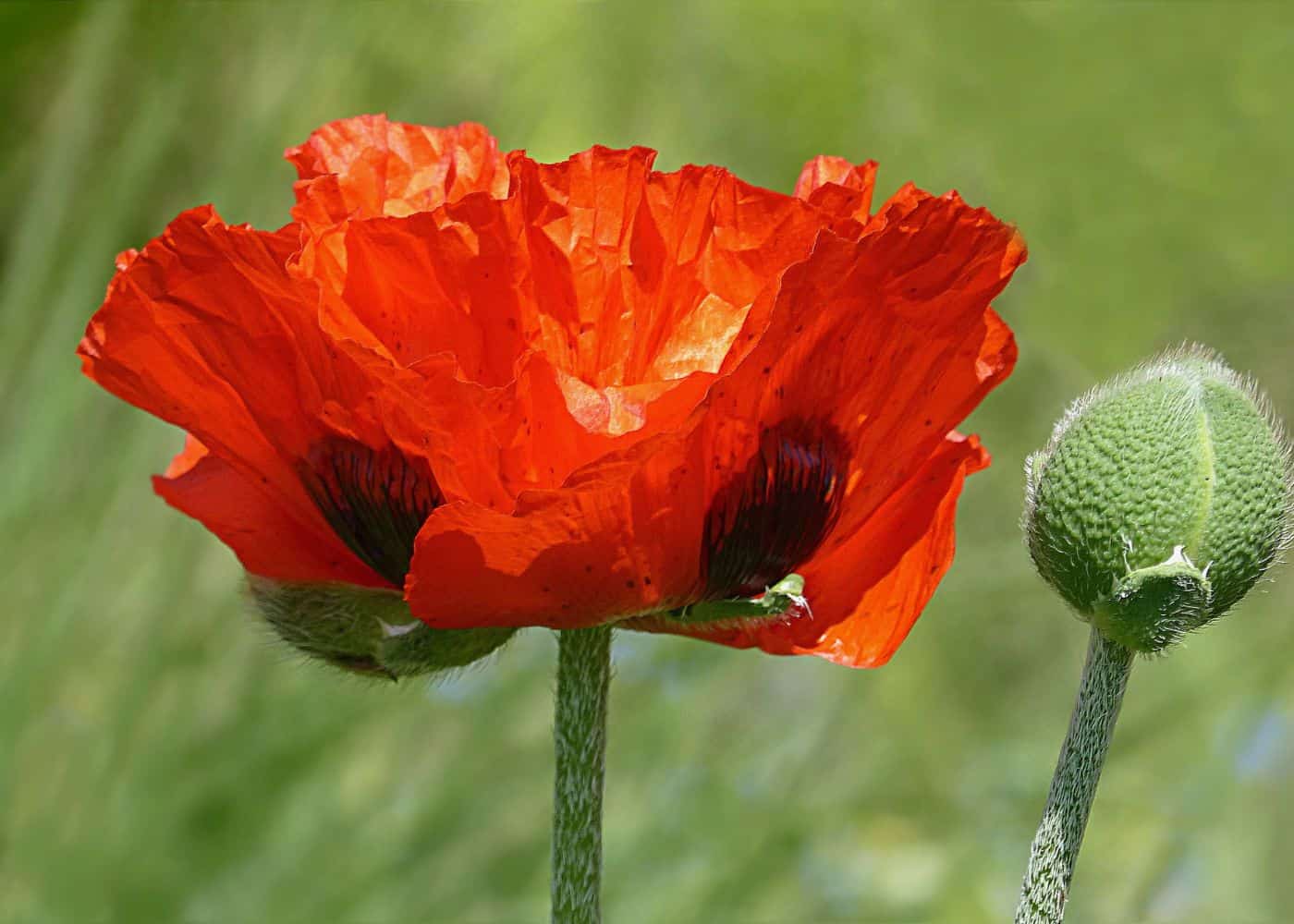
10. Poppy
Poppies are a beautiful and versatile flower. They come in many species and varieties, from the delicate single-petal cultivars to larger double blooms.
When it comes to planting poppies, there are several things you should consider before getting started. First off, they need plenty of sun and well-drained soil for optimal growth. If the soil in your garden is too wet or clay-filled, you might think about incorporating some compost or other natural material before planting poppies.
Keep an eye out for potential issues, such as aphids, slugs, and snails, which could harm young plants. Use organic insecticidal soap sprays if necessary but always follow product labels carefully when applying any type of treatment in the garden.


